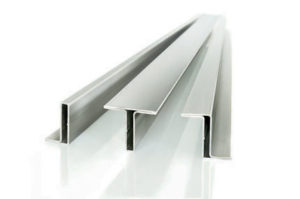In a digital era, leading manufacturers are eying to automate factories, capitalize on big data, drive predictive maintenance and collaborate efficiently with suppliers and partners on part designs with 3D tools. It is important then for fabricators to raise their digital quotient and prepare them for Industry 4.0, before their competitors do. The first major change as such should occur in replacing the 2D design approach.
by Kashyap Vyas
 Adopting right design tools is equally important for fabricators if they want to be a part of the innovation circle that is already on its path to disrupt the manufacturing sector. It is likely that the disruption will affect the profit margins of conventional fabricators to a great extent, if there are no measures taken to improve the existing processes and take productivity to the next level and balance the profitability margins.
Adopting right design tools is equally important for fabricators if they want to be a part of the innovation circle that is already on its path to disrupt the manufacturing sector. It is likely that the disruption will affect the profit margins of conventional fabricators to a great extent, if there are no measures taken to improve the existing processes and take productivity to the next level and balance the profitability margins.
The first major change as such should occur in replacing the 2D design approach. Given the fact that 2D drawings have been successful over past several decades to effectively communicate the design intent, it is acceptable that why fabricators still prefer to work in a 2D environment. However, 3D CAD models of sheet metal products consists a wealth of information that can be leveraged across the entire product development process. As a fabricator, you are missing out big time on taking productivity to the next level, if you are still restricting your design processes to 2D.
 Enhanced productivity with 3d for sheet metal design
Enhanced productivity with 3d for sheet metal design
Today, the ample amount of 3D CAD tools available specific for sheet metal design requirements can turn even the most complex design tasks into an easy to manage 3D part or assembly models, which can be communicated across the departments without losing the design information. Some of the key features of a 3D approach are:
1. Design Flexibility
3D modeling approach provides design engineers the ability to quickly turn their ideas to a manufacturing ready object. This is possible through the tools and features that remove the design bottlenecks at the conceptual stage, allowing engineers to explore complete design space and come up with promising products. Almost all CAD tools available in the market today offer the flexibility to convert solid models to sheet metal models, by adding bends, fillets, chamfers and other features to completely define the sheet metal component/assembly. Such functionalities ensure that new product design or changes in existing ones are accommodated with better accuracy and can be pushed to fabrication shop quickly.
2. Better Communication and Collaboration
The major benefit for fabricators in adopting 3D is enhancing the design communication and collaboration across the value chain. In a conventional 2D setup, this is often a painstaking process, requiring greater control over accuracy and flow of design data to avoid change orders and delays at the shop floor. The situation is even critical where multiple vendors are involved in the product development. 3D approach on the contrary makes it easy to share design data across teams with better revision control. Any change in the 3D model automatically updates the drawings and hence leaves fewer chances of errors at the shop floor.
3. Using 3D Models Beyond Manufacturing
As mentioned earlier, 3D models can be used at multiple instances than just for design and manufacturing. With in-built rendering engines, CAD tools have the capability to develop high-quality photo-realistic images of the sheet metal products that can be used in marketing collaterals, brochures and catalogs to improve sales communication with end customers. With 3D models, it is also possible to create working simulation as well as technical documentation and user manuals without requiring specialized tools and resources for the purpose.
4. Opportunity for design automation
One of the vital benefits of utilizing 3D approach is to integrate automation in the design process, especially for engineer-to-order products that require minimal design changes according to the customer specifications. Fabricators can quickly generate manufacturing information, BOM and cut lists for each new custom order, without really opening the existing CAD geometry and performing the necessary changes. Elements like models, drawings and sales documents can be automatically generated, bringing a drastic reduction in the engineering lead time.
Conclusion
Fabricators can unfold significant productivity through 3D design tools over conventional 2D drawings. Considering the amount of information and possibilities a 3D model of sheet metal offers, it is important for fabricators to realize the potential of these tools and integrate in their existing processes. Remaining productive is a key to successfully compete in the market that is continually shifting towards digital culture, and 3D modeling approach is the first step in this direction for fabricators towards achieving complete digital maturity.
Ab out Author
out Author
Kashyap Vyas is an Engineer at Hi-Tech Engineering Services and holds a Master’s degree in Thermal Engineering with several research papers to his credit. He covers CAD and CAE topics for the engineering industry. His contributions are primarily focused on encouraging manufacturers and suppliers to adopt virtual product development tools to build efficient products with reduced time-to-market.



